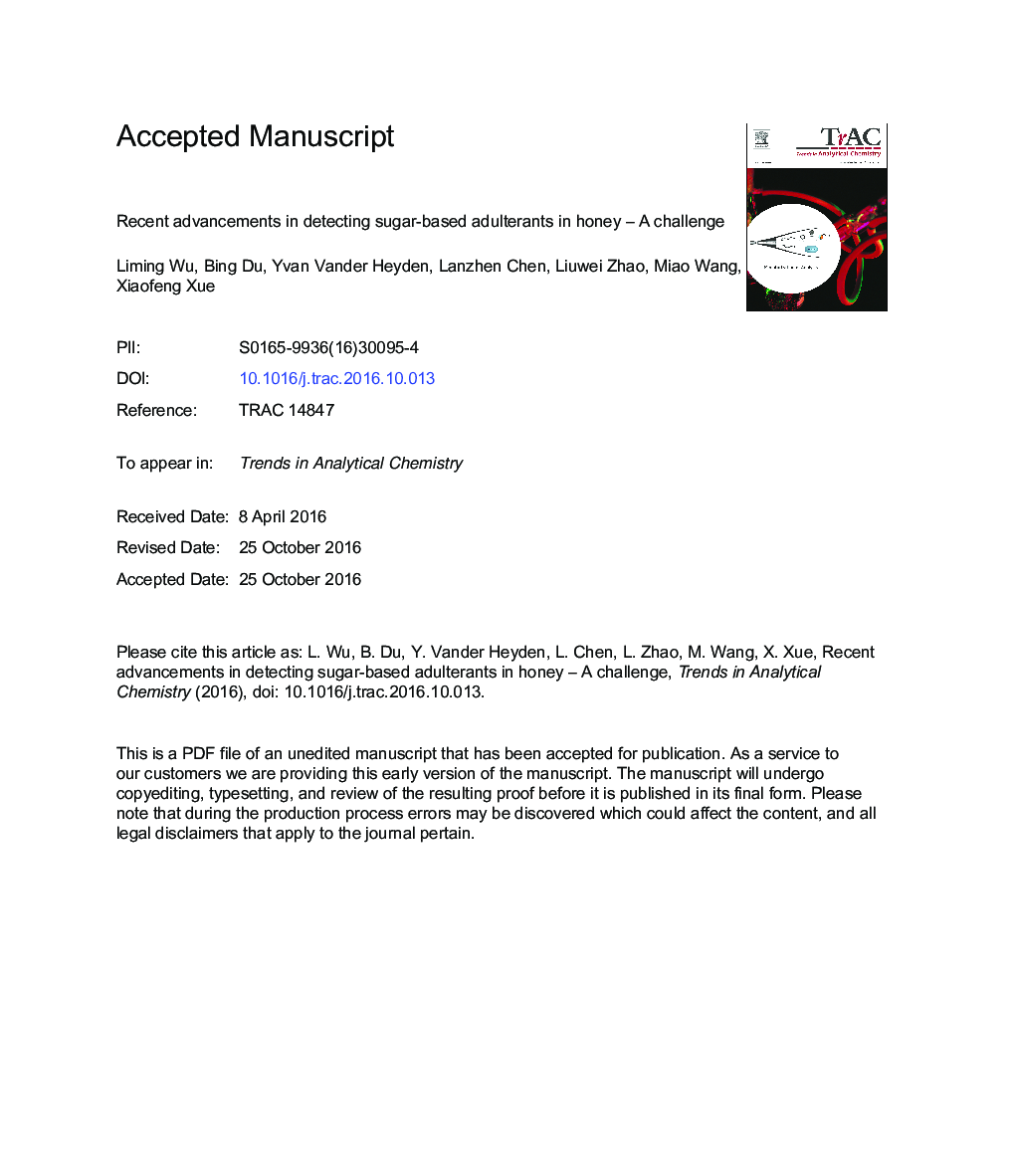| Article ID | Journal | Published Year | Pages | File Type |
|---|---|---|---|---|
| 5141725 | TrAC Trends in Analytical Chemistry | 2017 | 63 Pages |
Abstract
Honey is a natural sweetening agent widely used in food products and as a daily diet ingredient, but it also has medicinal properties. An increase in the demand for honey has resulted in adulteration by different sugar syrups. Authentication is therefore important for consumer confidence. This comprehensive overview covers known syrup adulterants and the analytical methodologies adopted for their detection in honey. For instance, TLC is the oldest method for honey analysis. C-isotope methods such as SCIRA, which can differentiate adulterated honey from C3 plants, are explained. Common analytical techniques such as HPAEC, GC, and HPLC are discussed. Advanced techniques, including IR, NMR, and Raman spectroscopy, which enhance the analysis process for larger numbers of samples, are also presented. Finally, Q-TOF-MS is addressed as a metabolomics-based detection method, since it has recently gained momentum following the increase in different adulterants that make detection more difficult.
Keywords
HFCSAFGPLS-SVMQ-TOF-MSMIRKNNDPLSDADECDTLCSIMCACVAATRGPCRBFNHPTLCANNNIRHMFHPAECmaltotetraoseF/GBPNPLSnuclear magnetic resonanceGC/MSk-Nearest NeighborsPCAPulsed amperometric detectorRefractive index detectorAuthenticityAttenuated total reflectanceLinear discriminant analysiscanonical variate analysisPrincipal component analysisLDAdiode array detectionElectrochemical detectionNMRAdulterationleast squares support vector machinePartial least squaresDiscriminant partial least squaresriddegree of polymerizationprincipal component regressionCAMRadial basis function networkBack propagation networkartificial neural networksHigh-fructose corn syrupQuadrupole time-of-flight mass spectrometryFTIRInfrared spectroscopyFourier transform infrared spectroscopyHoneyhigh-performance thin-layer chromatographyMid-infraredNear infraredmaltohexaoseMaltoheptaoseMaltotrioseMaltoseMaltopentaoseMetabolomicsSoft independent modeling of class analogyPCRPADhigh-performance liquid chromatographyHPLCHigh-performance anion exchange chromatographythin-layer chromatographyGel permeation chromatographygas chromatography coupled to mass spectrometryGas chromatographyChemometrics
Related Topics
Physical Sciences and Engineering
Chemistry
Analytical Chemistry
Authors
Liming Wu, Bing Du, Yvan Vander Heyden, Lanzhen Chen, Liuwei Zhao, Miao Wang, Xiaofeng Xue,
